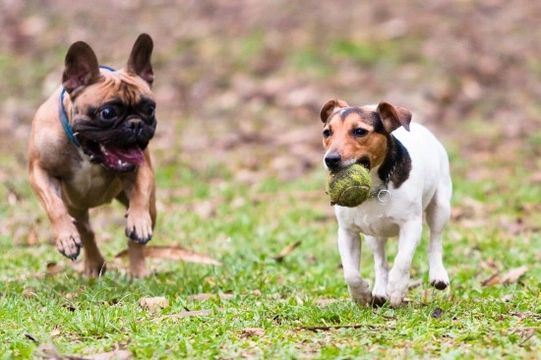
The four unspoken rules of dog socialisation and play
Correct socialisation when young is vitally important to the healthy mental development of the dog, and to teach dogs how to interact with others properly and safely. No dog will go through their life without coming into contact with other canines, and this means it is vitally important to take every opportunity to socialise your dog properly, and allow them to spend time playing with others.
As social animals, dogs tend to very much enjoy playing with and running around with other dogs, and this fulfils a whole range of important functions including providing both exercise and mental stimulation, and keeping your dog happy! Play should be viewed as a positive thing that you should actively encourage, rather than a simple way to waste time, and you should ensure that your dog gets the chance to let loose with others on a regular basis!
The ability to play and get on well with other dogs is a strong indication of wellbeing, and everything being as it should. Play will only occur when all of the dogs involved are happy, comfortable with each other and feel confident, and play behaviour is one of the first things that become sacrificed to things like stress, discomfort or a lack of food.
When playing with each other, all dogs abide by a very clear and yet often indistinct set of rules regarding their behaviour with others, and how they interact with strange dogs in a temporary pack situation. At the root of this are four cornerstones of canine play communication and self-limitation, all of which are widely understood by dogs from all walks of life and from all over the world, assuming that they have been given the opportunity to learn them!
As they learn and grow from their interactions with others, dogs quickly pick up on the cues of correct behaviour, how to stay safe, and how to avoid causing offence! In this article, we will look in more detail at the four basic cornerstones of canine play and socialisation, and how they manifest.
Meta-signals
Dogs communicate volumes with each other without words, and one of the core ways of doing this involves the use of meta-signals. Meta-signals are gestures, actions and behaviour patterns that form part of a wordless language, understood by all well socialised dogs, and which mean that they are simply pretending and playing and not serious.
In play, meta-signals can tell other dogs the difference between a play growl and a real growl, or false submission as part of play, among a great many other things! Meta-signals are the dog’s way of telling another that they are ready and willing to play, and that anything that happens as part of that play is simply part of the game, will not lead to aggression, and is not to be taken too literally!
“Stop” signals
While meta-signals allow dogs to indicate a willingness to play and that the game should not be taken seriously, “stop” signals are also necessary to put some markers in place and stop a potential game from getting out of hand. They allow dogs to communicate to each other that one of them wants a break, or that the other dog is going too far and to dial things back a little.
These unspoken cues are difficult for human observers to pick up on, and often, all you will see of a stop cue having been initiated is a sudden break in play, or the play being dialled back a notch. When this occurs, it gives both dogs a time out to have a rest, and generally, the dog that calls for the time out will be the one to re-initiate the game when they are ready.
Self-limitation
If you have ever seen a large, powerful dog playing kindly and safely with a much smaller dog, then you have witnessed canine self-limitation in play. This is a skill that large or very boisterous dogs quickly learn if they want to get involved in play with other dogs without causing them harm! Bite inhibition is a form of self-limitation, but self-limitation is also used to reassure smaller dogs that they are not in any danger from the game. Self-limitation may also be displayed as a very fast runner deliberately checking their pace so that a slower dog has a chance of keeping up, or by a larger dog deliberately restricting the power of their actions in rough and tumble to avoid causing harm.
Role reversal
Play socialisation allows dogs to literally play out and explore scenarios that would not be possible in highly charged, real world interactions, such as switching the role of the alpha and dominant positions in the dogs’ relations to each other. This means that even bottom dogs can have a go at being the alpha, and more dominant dogs can bow, lie on their backs and play-submit as part of the game. It can be interesting to observe this type of canine behaviour, and also, to see how things revert back to the status quo once the game is over!



